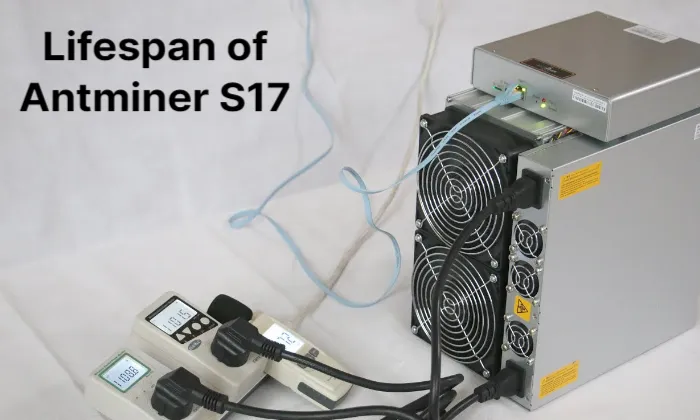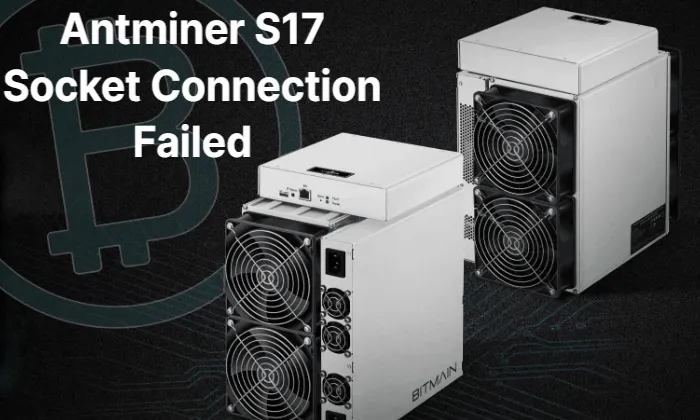Hello and welcome to the blog for the Antminer S17 series! In-depth exploration of the fascinating world of Bitcoin mining difficulty is what we’re doing today.
An automatic system is in place that automatically adjusts the difficulty depending on how many miners are vying to discover blocks at any given time, ensuring that Bitcoin blocks are discovered roughly every 10 minutes.
As the name suggests, the difficulty of mining for new Bitcoin blocks is referred to as Bitcoin mining difficulty.
The Bitcoin network uses an algorithm that was hard-coded by Satoshi Nakamoto into the source code because it is entirely decentralized and not controlled by a single central authority. In order to maintain a steady rate of block discovery, this algorithm constantly modifies the level of difficulty of the mining process to correspond with the number of miners active in the network.
This idea has a direct bearing on our mining operations and profitability, so it is imperative that miners understand it. This article will examine the concept of Bitcoin mining difficulty, how it is calculated, its importance to the mining industry, and how miners can overcome its difficulties. So let’s start now!
Table of Contents
A Primer on Bitcoin Mining

The security and validity of the entire network and its native cryptocurrency, bitcoin (BTC), depend on the Bitcoin mining process. The central component of Bitcoin’s consensus system, or the system by which all distributed participants come to an agreement on new data entering the blockchain, is mining. The network is entirely dependent on a decentralized transaction validation process, where anyone in the world is capable of approving new transactions and adding them to the blockchain in blocks, in chronological order.
As easy as it may seem, the proof-of-work procedure necessitates a computer-intensive effort because the would-be validators must use their devices to produce a winning fixed-length code before anyone else.
The purpose is to deter potential malicious actors from joining the network and trying to corrupt the blockchain with invalid transactions by making validators expend some kind of energy in order to find new blocks.
Over time, miners have shifted to using specialized computing devices called application-specific integrated circuit (ASIC) miners, which can generate more than one quintillion random codes per second—an exponentially greater number of guesses than any typical laptop can—to increase their chances of winning.
Read more: Solo Mining Vs Pool Mining With Antminer S17: Which is Better
Why Bitcoin Mining Difficulty Matters
By maintaining a 10-minute window for finding new blocks, the Bitcoin difficulty algorithm is designed to keep the system as a whole stable. In essence, it takes one miner out of the entire network roughly 10 minutes to generate a winning code and obtain the right to submit a new block of Bitcoin transactions for inclusion in the blockchain.
The algorithm intervenes to maintain this frequency and modifies the level of difficulty for mining Bitcoin. The difficulty of mining Bitcoin increases whenever there is a surge in miners or mining equipment. If the opposite occurs (i.e., fewer miners are competing to find new blocks), the protocol lowers the mining difficulty to make it simpler for the remaining miners to find blocks. By increasing or decreasing the zeros at the front of the target hash, the Bitcoin network’s mining difficulty can be changed.
The name given to the particular hash (fixed-length code) that all miners are attempting to outperform is the target hash. The winner is whoever generates a random code first that has an equal or greater number of zeros at the front than the target hash.
Without such a system, as more miners joined the network with more advanced equipment, blocks would probably be found faster and faster. This would cause an unpredictably high rate of new Bitcoin issuance, which would probably have the side effect of preventing the currency’s value growth.
It’s important to remember that a big draw of Bitcoin is its predictable, steady rate of inflation as opposed to the unpredictable and rampant inflation of fiat currencies caused by excessive quantitative easing. It’s a truly finite asset with a relatively low maximum supply because the circulating supply is restricted to a maximum of 21 million coins. Theoretically, assuming continued high demand, both of these elements ought to contribute to maintaining Bitcoin’s price over time.
How Frequent is Bitcoin Mining Difficulty Adjusted?
Every 2,016 blocks, or roughly every two weeks, the Bitcoin mining difficulty is updated. The difficulty epoch, which is used to determine whether the activities of miners over the past two weeks have decreased or increased the time it takes to mine a new block, is why every interval of 2,016 blocks is known as such. The mining difficulty will be raised if the time required is less than 10 minutes. When the block time exceeds 10 minutes, the reverse happens.

How is Bitcoin Mining Difficulty Calculated?
Several formulas are used to determine the difficulty of mining bitcoins. The formula that is used most frequently is Difficulty Level = Difficulty Target/Current Target.
Remember that the target hash’s mining difficulty is 1 and that the Difficulty Target is a hexadecimal representation of that hash.
The target hash of the most recent block of transactions serves as the current target in contrast. The result of dividing the two values is a whole number, which represents the degree of difficulty associated with mining Bitcoin.
An estimated 24 trillion hashes will need to be produced before a miner can identify the winning hash, for example, if the answer is 24 trillion. Of course, there are times when miners are fortunate and discover it with a great deal fewer guesses.
Read more: How Much Does it Cost to Mine a Bitcoin in 2023?
How Bitcoin Mining Difficulty is Adjusted
By contrasting the time it should have taken to find the previous 2,016 blocks of transactions with the standard time it should take to find 2,016 blocks on the Bitcoin network, mining difficulty adjustments are made. The acceptable block time is 10 minutes, so keep that in mind. As a result, it is anticipated that mining 2016 blocks will take 20,160 minutes (2016 multiplied by 10 minutes).
The network computes the total amount of time required to mine the most recent 2,016 blocks. Then, the most recent difficulty level is multiplied by the ratio of the standard 20,160 minutes (10 minutes x 2,016 blocks) to the amount of time needed to climb the previous difficulty epoch. The result of the calculation determines how much of a change in mining difficulty must be made in order to reduce the block time to the desired 10 minutes.
Nevertheless, a flaw in the original Bitcoin protocol causes difficulty level adjustments to be based on the 2,015 preceding blocks rather than the 2,016 blocks that are theorized.
Although a 10-minute block time is the target, the mining difficulty cannot be changed to four times higher or lower than it is at the moment. Each difficulty epoch has a maximum change of +300% and a minimum change of -75%. The goal of this rule is to prevent any sudden changes in the difficulty of mining.
Navigating Mining Difficulty Challenges
- Equipment Upgrades: As the difficulty of mining rises, it is critical for miners to stay ahead by making equipment upgrades. The Antminer S17 series, which is renowned for its exceptional hash rate and energy efficiency, can assist miners in overcoming more difficult challenges and maximizing their profitability.
- Pool Mining: For individual miners or those who have few resources, joining a mining pool can be advantageous. Participants can pool their computing power to jointly mine new blocks through pool mining. In pools, participants receive rewards proportionately based on their contributions.
- Cost reduction: The profitability of mining is heavily influenced by energy costs. Miners can investigate cost-cutting measures like locating operations in areas with cheap electricity or utilizing renewable energy sources.
Conclusion
A key component of the cryptocurrency ecosystem is the difficulty of mining bitcoins. It guarantees the stability, regularity, and security of the network’s block genesis. To stay competitive and profitable as difficulty levels rise, miners must adapt and adopt cutting-edge technologies like the Antminer S17 series. Miners can overcome difficulties and continue to contribute to the expansion and decentralization of the Bitcoin network by comprehending mining difficulties and employing the appropriate strategies.
Do not forget that the world of Bitcoin mining is dynamic and constantly changing. Keep up with developments, be flexible, and keep raising the bar for mining efficiency. Enjoy your time mining with the Antminer S17 line!



